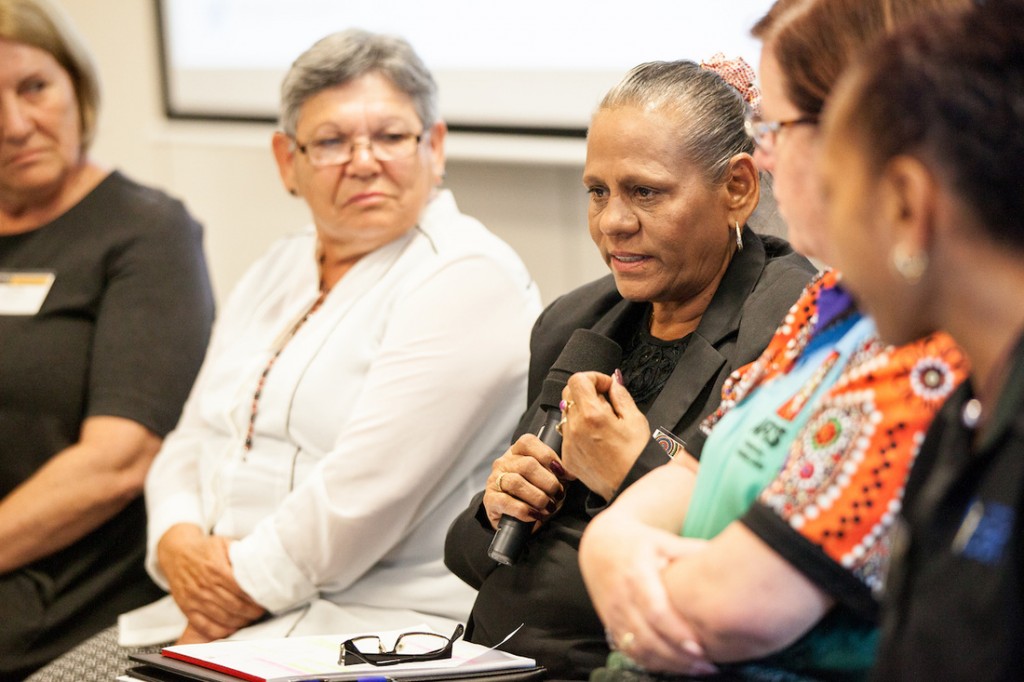
Fran Clements from Western Australia shares her experiences as an Indigenous financial counsellor at the Indigenous Superannuation Summit 4.11.2016
Feels like stolen wages
Well into the 20th century, Australian governments garnished large portions of Aboriginal and Torres Strait Islander peoples’ wages. In Queensland, half of Indigenous workers’ wages went into government-administered savings accounts, with a further 25 per cent going to income tax and deductions for an ‘Aborigines Welfare Fund’, resulting in a take home pay of only 25 per cent as ‘pocket money’.
“Most of the money that was placed through trust funds was never returned to those it belonged to regardless of how hard they tried – and believe me they tried hard to access that money,” says Michael Galluzzo from ASIC’s Indigenous outreach program.
“We hear lots of comments like, ‘No, we don’t bother with that super stuff, it’s like stolen wages’,” Galluzzo says.
AUSTRAC national manager strategic intelligence and policy Bradley Brown encouraged super funds to embrace the new guidelines.
“Indigenous people live in some of the most remote parts of this country and it makes it extremely challenging,” Brown says.
“We can sit in ivory towers in the cities and not get that.”
AUSTRAC’s recent guidance states alternative identification is valid as long as it is reliable and independent. This includes, but is not limited to, an original primary photographic identification document; an original primary non-photographic identification document; and an original secondary identification document.
“Alternative identification documents could include references from key members of Indigenous communities such as elders or community leaders, medical practitioners and school principals,” Brown says.
Indigenous Superannuation Working Group chair Eva Scheerlinck says some funds are already taking updated protocols to the board for approval, but even then it would likely be June 2017 before they were implemented.
The Indigenous Superannuation Working Group is a cross industry collaboration between the Australian Institute of Superannuation Trustees, the Association of Superannuation Funds of Australia, the Financial Services Council, Women in Super, and a handful of super funds.
Scheerlinck says super fund trustees will have to be satisfied that any new identification protocols balance the need for financial inclusion and risk management, at a time when there is more cybercrime and attempted identity theft than ever before.
Proper training to empower frontline fund staff, such as call centre operators, will be critical, she says.
Systemic financial exclusion
Identification challenges are yet another obstacle to Indigenous Australians engaging with superannuation, a system that too often excludes them.
Superannuation coverage for Indigenous Australians is about 66 per cent for men and 55 per cent for women, compared to rates of 85 per cent for men and 80 per cent for women across the population more generally. Retirement outcomes of Indigenous workers are approximately 27 per cent lower than average.
One of the most shameful statistics is that Indigenous Australians remain much less likely to live to an old enough age to access and enjoy the super they have saved. In 2010-2012, life expectancy at birth for Aboriginal and Torres Strait Islander males was 69.1 years, and 73.7 years for women, representing a gap with non-Indigenous Australians of 10.6 years for men and 9.5 years for women.
“It is critical that the industry develops a better understanding of the underlying cultural and socioeconomic issues for Aboriginal and Torres Strait Islander peoples in accumulating, accessing and distributing their superannuation,” Australian Human Rights Commission president professor Gillian Triggs told Investment Magazine.
ASIC’s Indigenous outreach program wants to help super fund executives gain that understanding and the regulator has begun facilitating visits to regional and remote communities.
The senior leadership of QSuper joined ASIC on a fact-finding trip to the Lockhart River community in 2014. Since then QSuper has implemented a range of practical changes.
The $60 billion Queensland public sector fund now identifies postcodes where there is a high risk of mail going astray, often because it is delivered infrequently by plane to a central location rather than direct to the home; and makes more of an effort to contact these members by other channels, such as phone.
This is important because a series of returned letters can trigger the transfer of inactive accounts into “lost” super funds administered by the Australian Tax Office.
Each fund will need to tailor solutions to the needs of its specific member cohort.
At UniSuper, the industry fund for university academics, identification requirements have not posed a challenge for members, manager assurance and reporting, Marlene Sadhai, says.
HESTA general manager business development and policy Mary Delahunty says the industry fund for health workers is looking for ways to close the Indigenous super gap, through the development of its Reconciliation Action Plan.
ASIC has extended an open invitation to the senior leadership of super funds to join a roadshow to the Anangu Pitjantjatjara Yankunytjatjara Lands, a remote Indigenous community in South Australia, in the second half of 2017.
******
This article is sourced and reprinted with permission of Investment Magazine. View original story from the December 2016 issue at: http://investmentmagazine.com.au/2017/01/stop-superannuation-from-becoming-stolen-wages/